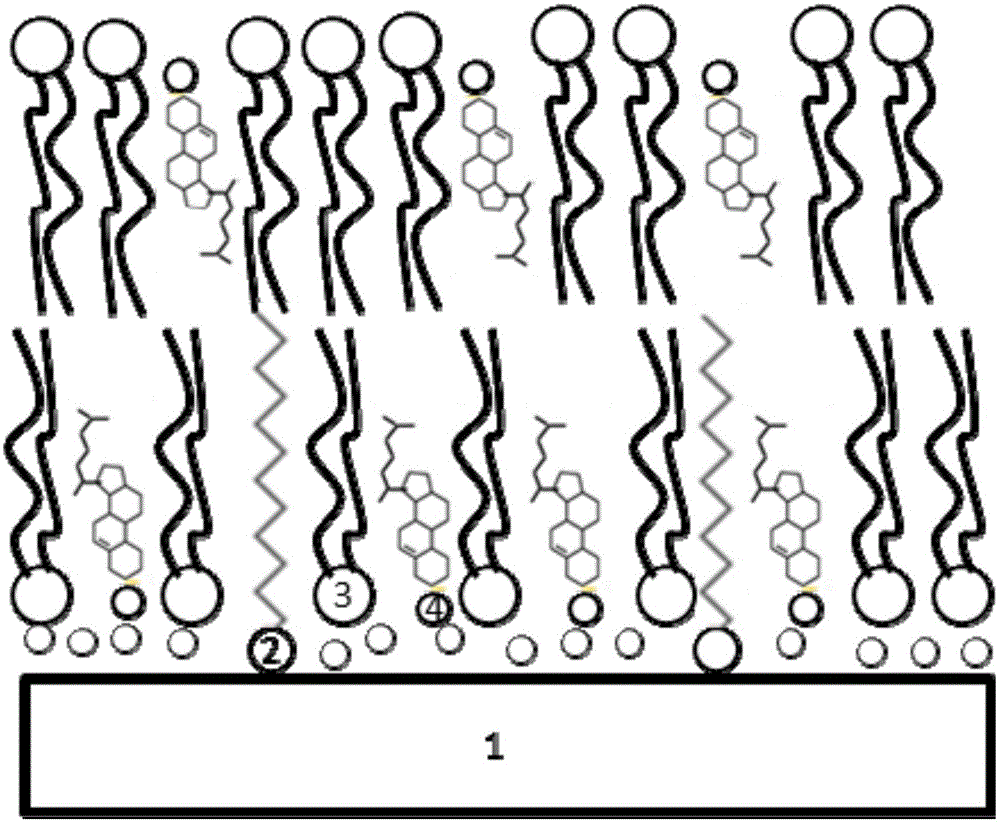Biosensor interface constructed through phospholipid membrane layer and preparation method of interface
A biosensor and biosensing technology, applied in the field of biosensors, can solve problems such as unstable structure, inability to provide a bionic environment, and many chemical synthesis processes, and achieve the effect of avoiding the introduction of sealing agents
- Summary
- Abstract
- Description
- Claims
- Application Information
AI Technical Summary
Problems solved by technology
Method used
Image
Examples
Embodiment Construction
[0016] From figure 1 As can be seen in , the biosensor interface constructed by the phospholipid membrane layer includes:
[0017] 1-decanethiol 2 for mixing with phospholipid vesicles;
[0018] Dipalmitoylphosphatidylcholine DPPC3, used to form unilamellar phospholipid vesicles;
[0019] Cholesterol 4, used to form a phospholipid modification layer;
[0020] Biosensing surface 1 is a transparent solid substrate (equivalent to a gold substrate) coated with a 50nm gold film, and the phospholipid mixture mixed with 1-decanethiol fixes the unilamellar phospholipid vesicles through the sulfhydryl group of 1-decanethiol on the biosensing surface.
[0021] The present invention mixes 1-decanethiol molecules into phospholipid vesicles to generate monolayer phospholipids with sulfhydryl groups, and then uses it to coat the commonly used gold substrate (i.e. transparent solid substrate coated with 50nm gold film) on the biosensor interface, A high-strength phospholipid modification...
PUM
 Login to View More
Login to View More Abstract
Description
Claims
Application Information
 Login to View More
Login to View More - R&D
- Intellectual Property
- Life Sciences
- Materials
- Tech Scout
- Unparalleled Data Quality
- Higher Quality Content
- 60% Fewer Hallucinations
Browse by: Latest US Patents, China's latest patents, Technical Efficacy Thesaurus, Application Domain, Technology Topic, Popular Technical Reports.
© 2025 PatSnap. All rights reserved.Legal|Privacy policy|Modern Slavery Act Transparency Statement|Sitemap|About US| Contact US: help@patsnap.com

